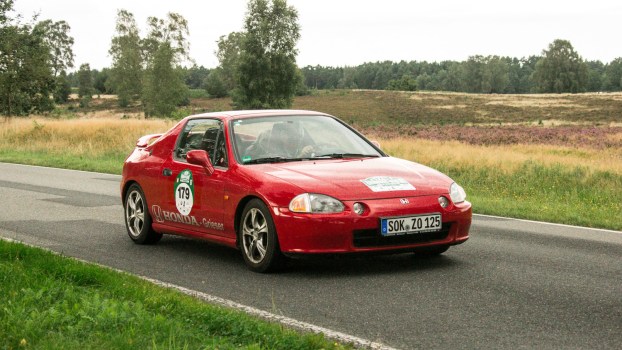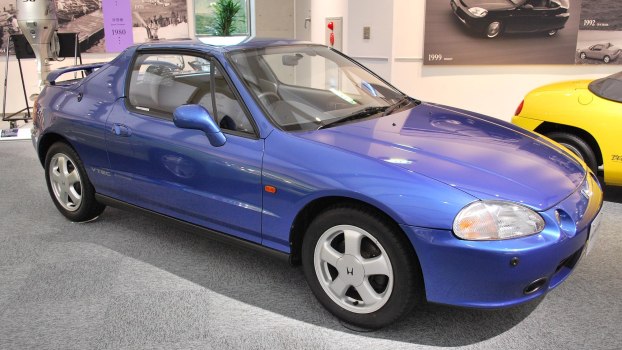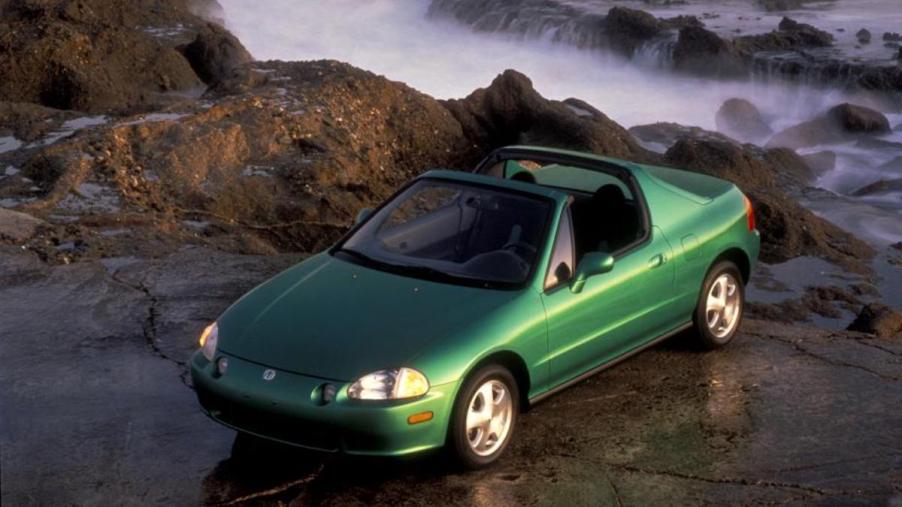
5 Reasons to Fall in Love With the Honda Del Sol
The 1990s produced some interesting and fun cars in the U.S. Be it supercharged sedans, rugged SUVs, or affordable two-seaters, there were plenty of new and improving options on the car market. One of the cars from that decade that gained a following is the Honda Del Sol, a two-seater Honda Civic relative with a targa top.

The Honda Civic Del Sol, a two-seater targa top car, succeeded the Honda CR-X starting in the 1993 model year. It was based on the Honda Civic platform and was in production through 1997 for North America. Starting in 1995, the name was shortened to the Honda Del Sol. According to Edmunds, it was a front-wheel drive competitor to the rear-wheel drive Mazda Miata, and nearly 75,000 units were sold in the U.S. during its run. In the years since, it’s become a beloved two-seat roadster. It’s light, powerful, stylish, and fun to drive. Here are five reasons to fall in love with the Honda Del Sol:
The Honda Del Sol featured a targa top convertible design
One of the signature features of the Honda Del Sol is its targa top. HotCars reported that Porsche coined the term of a removable roof section that stores behind the seats. This means you can have the benefit of a convertible with the safety of a hard top.
Owners could remove hard top on the Honda Del Sol and store it in the trunk thanks to a built-in rack. This allowed for you to still use the trunk space while storing the targa top. This made it easy for the Honda Del Sol to go from a two-seat roadster to a convertible. Given that the name Del Sol translates from Spanish to “of the sun”, it was easy to enjoy a nice drive in sunny weather in the roadster.
The targa top storage technology
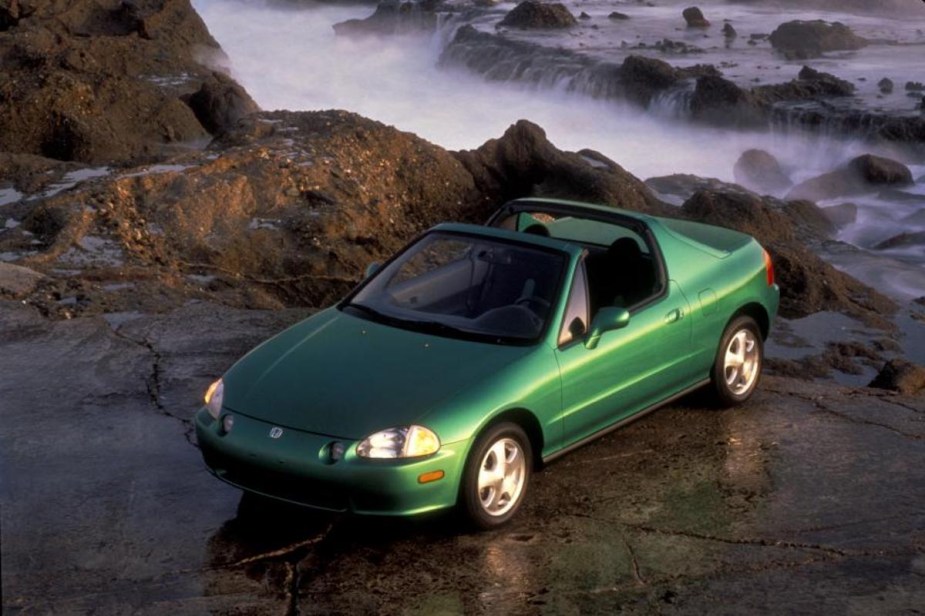
Even with the targa top stored in the trunk, you still had plenty of space for cargo in the Honda Del Sol. The in-trunk rack would secure it quickly and easily.
For Honda Del Sol models sold in Europe and Asia, there was a special automatic mechanism for removing the targa top called the “TransTop”. With the TransTop, the Del Sol’s trunk rises up to the level of the targa top. Arms from the trunk then retract the roadster roof into the trunk lid itself and the whole unit returns into the trunk area, leaving the driver in convertible mode. The whole process takes less than a minute. The TransTop process was a complicated way of doing a relatively simple task. So its no surprise that the U.S. didn’t adopt the models.
Powerful engine options
The first Honda CR-X Del Sol models came with two inline four-cylinder engine options for the S and Si trims. The base S model came with a 1.5-liter four-cylinder generating 102 horsepower and 98 lb-ft of torque. The Si trim’s 1.6-liter four-cylinder produced 125 horsepower and 106 lb-ft of torque. The Del Sol weighed between 2,300 and 2,500 lbs in its run, meaning it was light enough that the low power figures were sufficient.
Starting in 1994, it added a third engine option to the Honda Del Sol lineup: a 1.6-liter four-cylinder VTEC powertrain that bumps up to 160 horsepower and 111 lb-ft of torque. This made the Del Sol unique; according to MotorTrend, that VTEC motor was the first to produce 100 horsepower per liter in a naturally aspirated mass-produced car. For context, the naturally aspirated engine in a 1995 Ford Mustang made just 43 horsepower per liter. In a modern Mazda Miata, that naturally aspirated 2.0-liter engine makes around 90 horsepower per liter.
Additionally, the VTEC models had upgrades to handle the increased power including stronger suspension components, larger brakes, and bigger tires.
The sporty yet comfortable interior
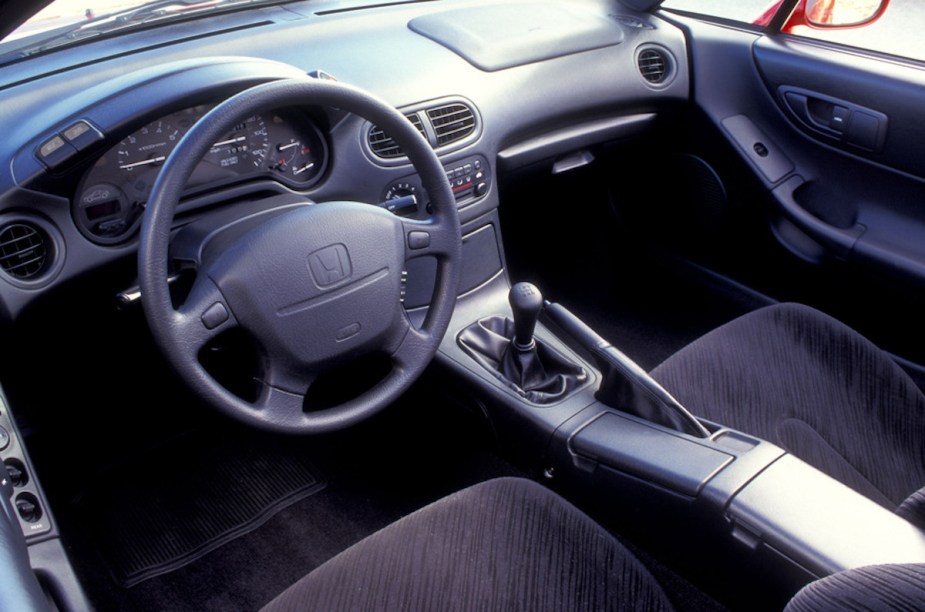
The factory options for the Honda Del Sol struck a good balance between comfort and looks. In fact, MotorTrend calls the bucket seats some of the more comfortable ones you’ll find but the red stripe down the middle gave it an aftermarket look.
With large doors and low seating, CarThrottle reviewers note that it felt like you were sitting in a go-kart. The bucket seats conform to the driver’s body easily and comfortably. The hard plastic dashboard and console give a high-quality feel to the interior.
The Honda Del Sol offered a manual transmission
If you want the power of the VTEC engine, the five-speed manual transmission is your only option. For the S and Si trims, a five-speed manual and four-speed automatic transmission were available. The manual transmission gives the roadster a racier feel and a few tenths of better acceleration, adding to the already enjoyable driving dynamics.
